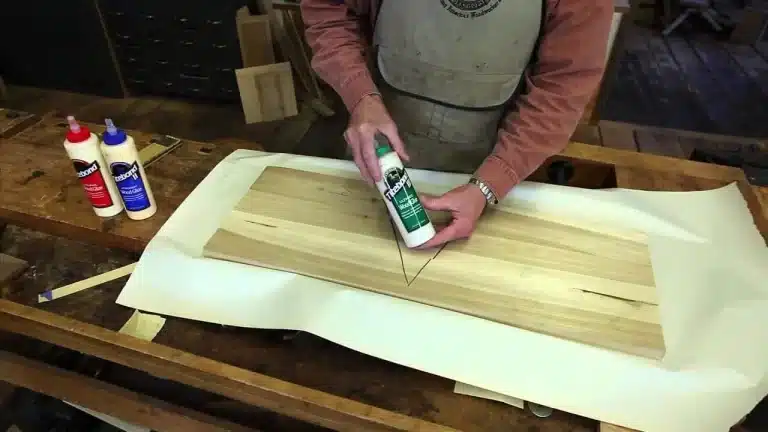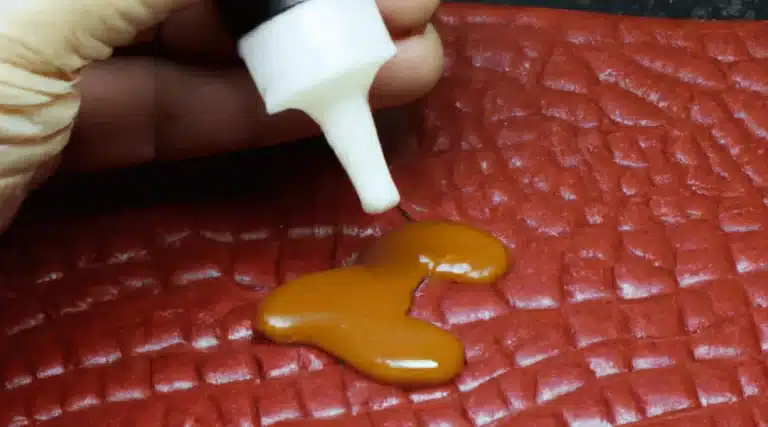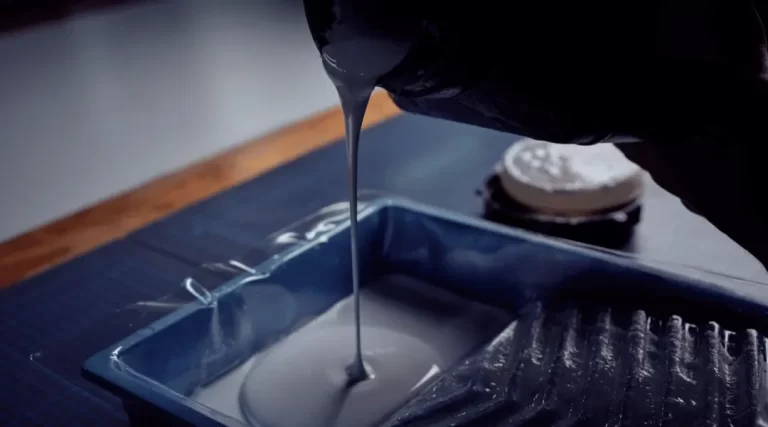The self-leveling adhesive is a type of adhesive that is widely used in various industries and applications. It is a versatile material that can be used for bonding, filling, and sealing. This adhesive is designed to level itself out. Which means it can be used on uneven surfaces and still maintain its structural integrity. The self-leveling adhesive is a popular choice for many DIY projects and commercial applications. Because of its ease of use and reliability.
In this article, we will explore what self-leveling adhesive is, its uses, and the pros and cons of using it. We will also provide tips for using this adhesive to help you achieve the best results.
Fundamental Properties of Self-Leveling Adhesive
Excellent Flow and Leveling
Self-leveling adhesive possesses exceptional flow properties, allowing it to spread evenly across the surface. This property ensures a smooth and level application, even on uneven or sloped surfaces.
Seamless Surface Finish
The self-leveling nature of the adhesive results in a seamless surface finish. It eliminates the need for additional smoothing or leveling, saving time and effort during the installation process.
High Bond Strength
Self-leveling adhesive exhibits a strong bond strength once cured. This property ensures a reliable and durable adhesion, making it suitable for various applications, including flooring, tiles, and industrial coatings.
Time-Saving Application
The self-leveling feature of the adhesive enables quick and efficient application. It eliminates the need for manual leveling or troweling, reducing labor-intensive processes and accelerating project timelines.
Compatibility with Different Substrates
Self-leveling adhesive demonstrates compatibility with a wide range of substrates, such as concrete, wood, ceramic, and metal. This versatility allows for seamless adhesion in various construction and renovation projects.
Stress and Crack Resistance
Self-leveling adhesive possesses inherent stress and crack resistance properties. It can withstand minor substrate movement, temperature variations, and foot traffic without compromising its integrity.
Easy Cleanup and Maintenance
Once cured, self-leveling adhesive forms a smooth and easy-to-clean surface. It requires minimal maintenance, enhancing its suitability for high-traffic areas and reducing long-term upkeep costs.
Precise Thickness Control
The self-leveling property of the adhesive enables precise control over the thickness of the applied layer. This control ensures consistent coverage and optimal performance, especially in demanding applications.
Improved Acoustic and Thermal Insulation
Self-leveling adhesive can enhance acoustic and thermal insulation properties when used in conjunction with appropriate underlayment materials. This benefit contributes to a more comfortable and energy-efficient environment.
Versatile Application Range
Self-leveling adhesive finds application in various industries, including construction, flooring, manufacturing, and automotive. Its adaptability to different environments and substrates makes it a versatile choice for many projects.
The Characteristics of Self-Leveling Adhesive

Flowability:
Self-leveling adhesive has excellent flowability, allowing it to spread evenly and smoothly across a surface. It can fill gaps, cracks, and uneven areas effortlessly, creating a level and seamless finish.
Easy Application:
Self-leveling adhesive is designed for easy application, making it convenient for both professionals and DIY enthusiasts. It can be poured or dispensed onto a surface and will automatically level itself, minimizing the need for manual spreading or leveling.
Quick Curing Time:
Self-leveling adhesive typically has a fast curing time, enabling it to set and harden quickly. This reduces the waiting time for the adhesive to dry, allowing for faster completion of projects.
Versatile Bonding:
Self-leveling adhesive provides strong and reliable bonding for a variety of materials, including concrete, wood, tiles, and more. It can be used for a range of applications such as flooring installations, tile setting, and subfloor leveling.
High Strength:
Self-leveling adhesive offers excellent bond strength, ensuring durable and long-lasting results. Once cured, it forms a robust and stable bond that can withstand heavy loads, foot traffic, and other stresses.
Self-Flattening:
One of the key characteristics of self-leveling adhesive is its ability to flatten and level itself automatically. It eliminates the need for manual spreading, troweling, or leveling, saving time and effort during application.
Improved Aesthetics:
By filling and leveling uneven surfaces, self-leveling adhesive enhances the overall appearance of the finished project. It creates a smooth and even surface, providing a visually pleasing result.
Compatibility:
Self-leveling adhesive is compatible with various flooring materials, including ceramic tiles, vinyl, hardwood, and more. It can be used in both residential and commercial settings, offering versatility in application.
Minimal Shrinkage:
Self-leveling adhesive exhibits minimal shrinkage during the curing process. This helps maintain the integrity of the bonded surface and prevents gaps or cracks from forming over time.
Moisture Resistance:
Many self-leveling adhesives offer moisture resistance, making them suitable for use in areas prone to high humidity or moisture exposure. This feature ensures the adhesive remains stable and durable in challenging environments.
Versatility of Self-Leveling Adhesive
Seamless Floor Installation
Self-leveling adhesive is highly versatile and widely used in the flooring industry. It provides a smooth and seamless surface for installing various types of flooring materials, such as tiles, vinyl, and hardwood. Its ability to level itself ensures an even, flat floor, minimizing the risk of tripping hazards and improving the overall aesthetics of the space.
Ideal for Subfloor Preparation
One of the key advantages of self-leveling adhesive is its ability to prepare subfloors effectively. It can be applied over uneven or rough surfaces, filling in gaps, cracks, and imperfections. This helps create a solid foundation for subsequent flooring installations, resulting in a durable and long-lasting finish.
Time and Labor Savings
Self-leveling adhesive offers significant time and labor savings compared to traditional methods. Its self-leveling properties eliminate the need for extensive manual leveling, reducing the overall installation time. It also eliminates the hassle of multiple coats, sanding, and additional surface preparation steps, streamlining the process and increasing efficiency.
Versatility in Various Environments
Self-leveling adhesive demonstrates versatility across different environments. Whether it’s for residential, commercial, or industrial applications, this adhesive can be utilized on various substrates, including concrete, plywood, and gypsum-based surfaces. It adapts well to different temperature and humidity conditions, making it suitable for both interior and exterior projects.
Enhanced Durability and Stability
When properly applied, self-leveling adhesive forms a strong and resilient bond with the substrate. This enhances the stability and durability of the flooring system, reducing the risk of cracks, shifting, or delamination. It withstands heavy foot traffic, impact, and other stresses, ensuring a long-lasting and robust flooring solution.
Easy Application and Smoother Finish
Self-leveling adhesive is designed for ease of application. Its liquid consistency allows for effortless spreading, ensuring a smooth and even surface. This leads to a visually appealing finish, free from lumps, bumps, or unevenness. The self-leveling properties of the adhesive create a seamless look that enhances the overall aesthetic appeal of the flooring.
Sound and Thermal Insulation
In addition to its leveling properties, self-leveling adhesive offers sound and thermal insulation benefits. It helps reduce noise transmission between floors and improves thermal efficiency by providing an additional barrier. This makes it an excellent choice for residential, commercial, and hospitality spaces, enhancing comfort and reducing energy costs.
Compatible with Various Flooring Types
Self-leveling adhesive is compatible with a wide range of flooring materials. It can be used with ceramic or porcelain tiles, luxury vinyl planks, laminate flooring, and more. This versatility allows for greater design flexibility, enabling creative combinations and seamless transitions between different flooring types within a space.
Quick Curing Time
Self-leveling adhesive typically has a relatively quick curing time. Once applied, it dries and cures within a specific timeframe, allowing for faster installation of subsequent flooring layers or finishes. This saves valuable time and enables faster project completion, particularly in time-sensitive situations.
Moisture and Crack Resistance
Self-leveling adhesive often exhibits moisture and crack resistance properties. It forms a barrier against moisture infiltration, preventing potential damage to the flooring system. Additionally, its flexibility helps minimize the occurrence of cracks due to substrate movement, temperature fluctuations, or other environmental factors.
Professional-Grade Results
With its leveling capabilities and performance attributes, self-leveling adhesive allows both professionals and DIY enthusiasts to achieve professional-grade results. It provides a reliable and high-quality solution for achieving flawless floor installations, ensuring customer satisfaction and long-term performance.
Uses of Self-leveling Adhesive
Self-leveling adhesive offers a wide range of uses and applications in various industries. Some common uses include:
Floor Installation:
- Leveling and securing floor tiles.
- Installing laminate or vinyl flooring.
- Bonding hardwood or engineered wood flooring.
Subfloor Preparation:
- Filling and leveling subfloor gaps or cracks.
- Anchoring subfloor panels or boards.
Concrete Repair:
- Patching and repairing concrete surfaces.
- Filling cracks and divots in concrete floors or walls.
Countertop Installation:
- Securing and leveling countertops.
- Bonding and leveling backsplashes.
Wall Tile Installation:
- Installing ceramic or porcelain tiles on walls.
- Leveling and securing glass or mosaic tiles.
Ceiling Panel Installation:
- Bonding and leveling ceiling panels.
Outdoor Paving:
- Installing outdoor tiles or pavers.
Bathroom Renovation:
- Securing and leveling bathroom fixtures.
- Bonding and leveling shower tiles or panels.
Construction Projects:
- Bonding and leveling construction materials.
- Installing prefabricated structures or components.
Industrial Applications:
- Anchoring heavy machinery or equipment.
- Bonding and leveling industrial surfaces.
Furniture Making:
- Bonding and leveling tabletops.
- Securing and leveling furniture components.
Art and Craft Projects:
- Creating resin art or epoxy projects.
- Bonding and leveling craft materials.
Advantages of Self-leveling Adhesive
Self-leveling adhesive offers several advantages that make it a popular choice for various applications. Some of the advantages of self-leveling adhesive are
Strong Bonding:
Self-leveling adhesive forms a strong bond with various surfaces, ensuring a durable and reliable attachment.
Easy Application:
The self-leveling nature of the adhesive simplifies the application process, allowing for quick and hassle-free installation.
Uniform Surface:
It creates a smooth and level surface, eliminating the need for extensive surface preparation and minimizing imperfections.
Time Efficiency:
Self-leveling adhesive saves time as it spreads evenly, reducing the need for excessive spreading or leveling.
Versatile Compatibility:
It is compatible with different materials such as wood, concrete, tile, and more, making it suitable for a wide range of applications.
Reduced Air Bubbles:
The self-leveling properties minimize the presence of air bubbles during application, resulting in a more aesthetically pleasing finish.
Improved Adhesive Coverage:
Due to its self-leveling nature, the adhesive covers a larger area with a consistent thickness, maximizing adhesive coverage and reducing material waste.
High Stability:
Once cured, self-leveling adhesive provides excellent stability and resistance to movement, ensuring long-lasting performance.
Seamless Finish:
It creates a seamless and smooth surface, enhancing the overall appearance of the project and providing a professional finish.
Stress Relief:
Self-leveling adhesive helps to distribute stress and load evenly, reducing the risk of cracks or failures in the bonded area.
Disadvantages of Self-leveling Adhesive
Despite its benefits, the self-leveling adhesive may present certain limitations and challenges that should be taken into account when selecting a suitable adhesive for a particular project.
Potential Messiness:
Self-leveling adhesive can be messy to work with, as it has a thin consistency and tends to flow easily. Care must be taken to prevent spills and drips during application.
Longer Drying Time:
Compared to regular adhesives, self-leveling adhesive often requires more time to dry and fully cure. This can prolong project timelines and delay subsequent steps.
Limited Repositioning:
Once applied, self-leveling adhesive sets quickly, leaving little room for repositioning or adjustments. Precise planning and execution are necessary to ensure proper alignment.
Surface Preparation:
Proper surface preparation is crucial for self-leveling adhesive. The substrate must be clean, level, and free of debris to achieve optimal adhesion and a smooth finish.
Uneven Application:
If not applied correctly, self-leveling adhesive can result in uneven coverage, leading to inconsistencies in the levelness of the surface. Careful attention must be paid during application to avoid this issue.
Potential for Air Bubbles:
During the self-leveling process, air bubbles can form if the adhesive is not properly mixed or if the surface is not adequately degassed. These bubbles can affect the final result and compromise the bond strength.
Sensitivity to Temperature:
Self-leveling adhesive can be sensitive to temperature variations. Extreme cold or hot conditions can affect its flow characteristics and curing time. It is important to adhere to the recommended temperature range for optimal performance.
Limited Gap-Filling Capability:
Unlike thicker adhesives, self-leveling adhesive is not suitable for filling large gaps or voids. It is primarily designed for creating flat and level surfaces.
Difficulty in Vertical Applications:
Due to its self-leveling nature, this type of adhesive is challenging to use in vertical applications. It is more suitable for horizontal or slightly inclined surfaces.
Cost:
Self-leveling adhesive is typically more expensive than regular adhesive due to its specialized formulation and leveling properties. It may not be cost-effective for smaller or simple projects.
Tips for Using Self-leveling Adhesive
Navigating the potential pitfalls of using a liquid substance to create a seamless bond can prove challenging, but with careful attention to detail and a steady hand, the application of self-leveling adhesive can be a smooth process akin to painting a canvas.
Prepare the Surface
Before applying self-leveling adhesive, ensure that the surface is clean, dry, and free from any debris or loose material. Remove any existing adhesive or paint for better adhesion.
Mix According to Instructions
Carefully follow the manufacturer’s instructions for mixing the self-leveling adhesive. Use the recommended mixing ratio and technique to achieve a proper consistency for application.
Start Pouring from the Farthest Point
Begin pouring the self-leveling adhesive from the farthest point of the room or area and work your way towards the exit. This ensures that you won’t have to walk over the freshly poured adhesive.
Use a Spreader or Squeegee
Once the self-leveling adhesive is poured, use a spreader or squeegee to distribute it evenly across the surface. This helps to eliminate any air bubbles and ensures a smooth, level finish.
Allow Sufficient Drying Time
Be patient and allow the self-leveling adhesive ample time to dry and cure. Follow the manufacturer’s guidelines for the recommended drying time before subjecting the surface to any foot traffic or additional work.
Plan for Expansion Joints
If you are applying self-leveling adhesive over a large area, consider incorporating expansion joints to allow for any movement or expansion of the substrate. This helps prevent cracks or damage in the future.
Use Safety Precautions
Wear appropriate personal protective equipment, such as gloves and safety glasses, when working with self-leveling adhesive. Also, ensure proper ventilation in the area to minimize exposure to fumes.
Clean Up Excess Adhesive
Promptly clean up any excess self-leveling adhesive that may have spilled or dripped onto surrounding areas. Use a suitable solvent or cleaner recommended by the manufacturer for easy removal.
Test Compatibility with the Substrate
Before applying self-leveling adhesive, it is advisable to conduct a compatibility test on a small, inconspicuous area of the substrate to ensure it adheres properly and doesn’t cause any undesired reactions or damage.
Seek Professional Assistance, if Needed
If you are unsure or inexperienced in working with self-leveling adhesive, it is best to seek professional assistance. They can provide guidance, expertise, and ensure the job is done correctly and efficiently.
Conclusion
In conclusion, self-leveling adhesive is a game-changer in the world of construction and flooring installations. Its stress-free application process makes work easier and more efficient, eliminating the need for manual spreading and leveling. With this adhesive, you can bid farewell to the frustrations of uneven surfaces and time-consuming leveling procedures.
The self-leveling feature ensures a smooth and level finish, enhancing the overall aesthetics and quality of your project. Whether you’re working on residential or commercial projects, self-leveling adhesive offers a stress-free solution that saves time, reduces costs, and delivers exceptional results.
Say goodbye to the headaches of uneven floors and welcome a hassle-free installation experience with self-leveling adhesive.





